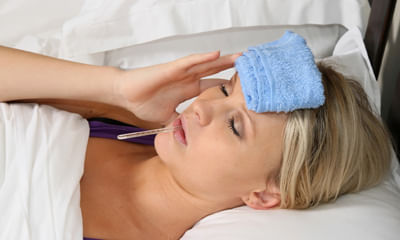Get the App
For Doctors
Login/Sign-up
Last Updated: Aug 29, 2019
BookMark
Report
Dengue: Facts and prevention measures
With dengue cases on the rise, here's all you need to know about the spread and prevention measures of the disease.
The number of dengue cases, caused by viruses transmitted by mosquitoes, have been on the rise, as the monsoon season is underway. Here are some important facts about dengue and a few preventive measures you need to be aware of.
Facts about the Aedes mosquitoes
The Dengue virus is primarily transmitted by Aedes mosquitoes. These mosquitoes do not lay eggs in drains, ditches, canals, wetlands, rivers or lakes. “What most people do not realise is that the dengue mosquito breeds in fresh clean water as opposed to dirty drains. Thus, people living in clean urban surroundings are more at risk of acquiring the disease,” says Dr KK Aggarwal, President HCFI & Honorary Secretary General IMA and a Padma Shri Awardee.
These mosquitoes can fly several hundred yards looking for water-filled containers, often found in a house and patio, to lay their eggs and it only takes a few mosquitoes in a household to produce a large dengue outbreak.
Humans are only bitten by the female mosquitoes who lay dozens of eggs, up to five times, during their life time. The eggs which can survive for months, hatch when submerged in water. The lifecycle of the mosquito is close to eight days - from egg to larvae, pupae and into an adult mosquito.
Tips to prevent dengue fever:
Do not let water accumulate in your house
Wear full-sleeve clothing
Use mosquito repellents, especially during the monsoon season
Since dengue is caused by a virus, it is the symptoms that are treated and the chronic phase of the illness with fever and myalgias lasts approximately one to two weeks.
The symptoms:
Severe joint and muscle pain
Swollen lymph nodes
Headache
Fever
Exhaustion - Rashes
While the risk of complications is in less than 1% of dengue cases, Dr Aggarwal has a few recommendations. The danger of dengue lies in dehydration, so it is vital to consume a lot of fluids and to only opt for a platelet transfusion if there is active bleeding or your platelet count is below 10,000.
The number of dengue cases, caused by viruses transmitted by mosquitoes, have been on the rise, as the monsoon season is underway. Here are some important facts about dengue and a few preventive measures you need to be aware of.
Facts about the Aedes mosquitoes
The Dengue virus is primarily transmitted by Aedes mosquitoes. These mosquitoes do not lay eggs in drains, ditches, canals, wetlands, rivers or lakes. “What most people do not realise is that the dengue mosquito breeds in fresh clean water as opposed to dirty drains. Thus, people living in clean urban surroundings are more at risk of acquiring the disease,” says Dr KK Aggarwal, President HCFI & Honorary Secretary General IMA and a Padma Shri Awardee.
These mosquitoes can fly several hundred yards looking for water-filled containers, often found in a house and patio, to lay their eggs and it only takes a few mosquitoes in a household to produce a large dengue outbreak.
Humans are only bitten by the female mosquitoes who lay dozens of eggs, up to five times, during their life time. The eggs which can survive for months, hatch when submerged in water. The lifecycle of the mosquito is close to eight days - from egg to larvae, pupae and into an adult mosquito.
Tips to prevent dengue fever:
Do not let water accumulate in your house
Wear full-sleeve clothing
Use mosquito repellents, especially during the monsoon season
Since dengue is caused by a virus, it is the symptoms that are treated and the chronic phase of the illness with fever and myalgias lasts approximately one to two weeks.
The symptoms:
Severe joint and muscle pain
Swollen lymph nodes
Headache
Fever
Exhaustion - Rashes
While the risk of complications is in less than 1% of dengue cases, Dr Aggarwal has a few recommendations. The danger of dengue lies in dehydration, so it is vital to consume a lot of fluids and to only opt for a platelet transfusion if there is active bleeding or your platelet count is below 10,000.



+1.svg)
